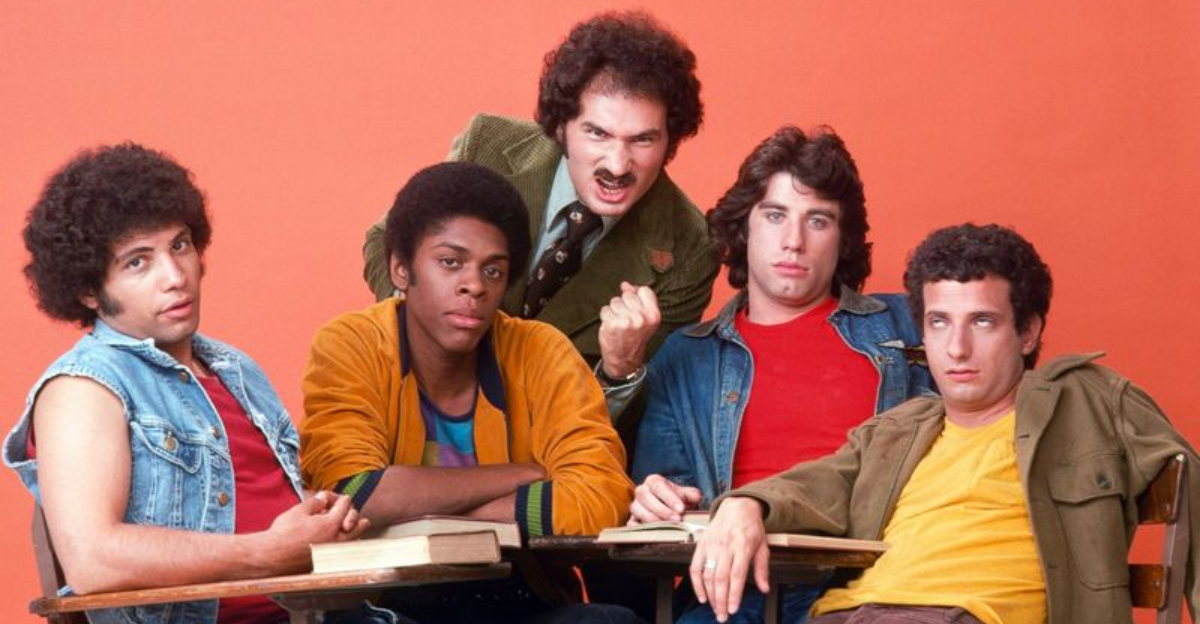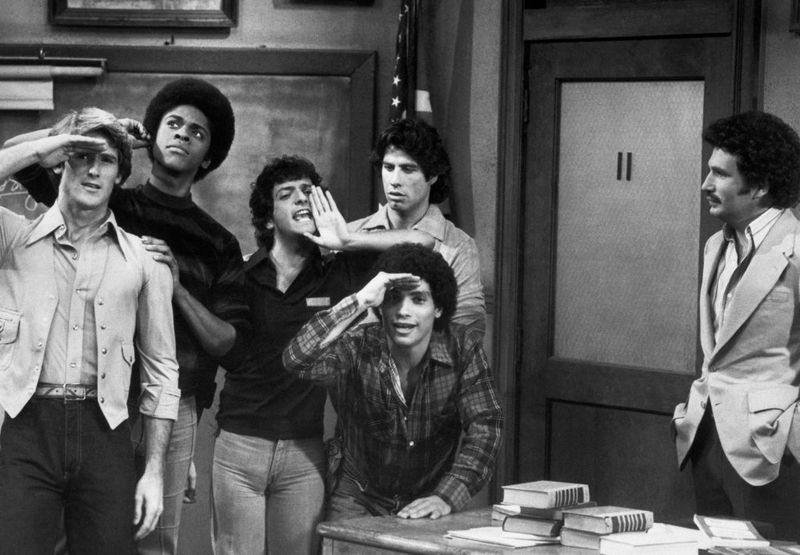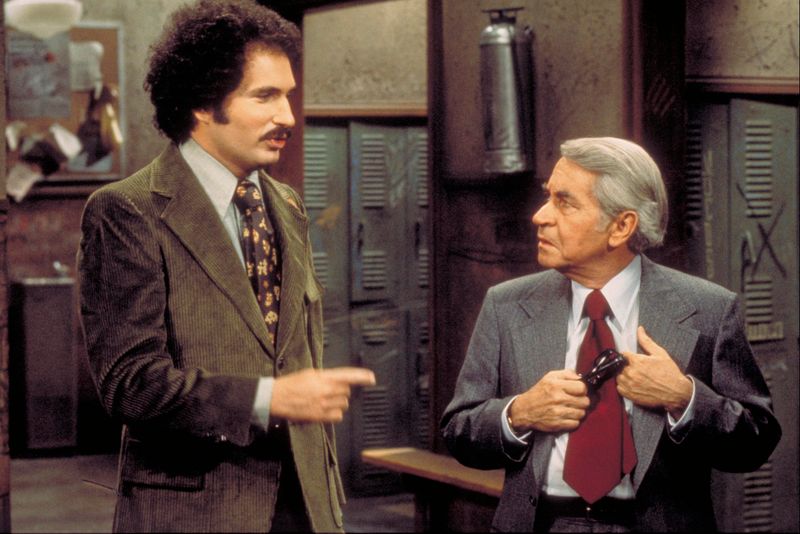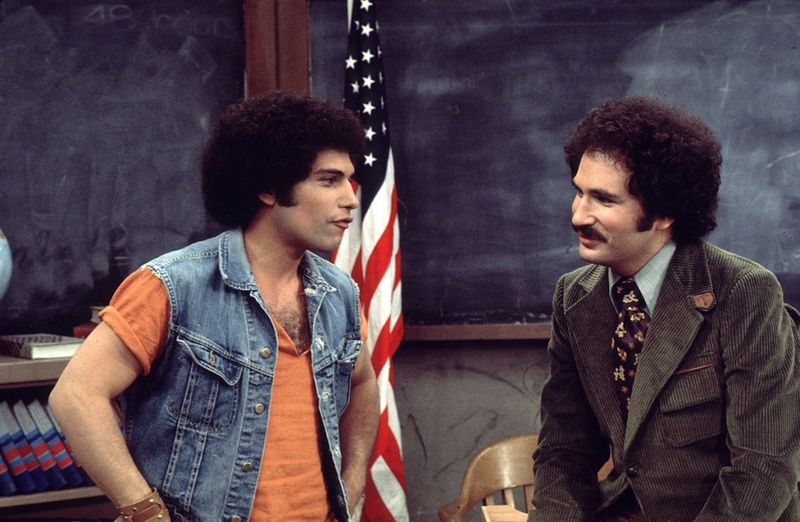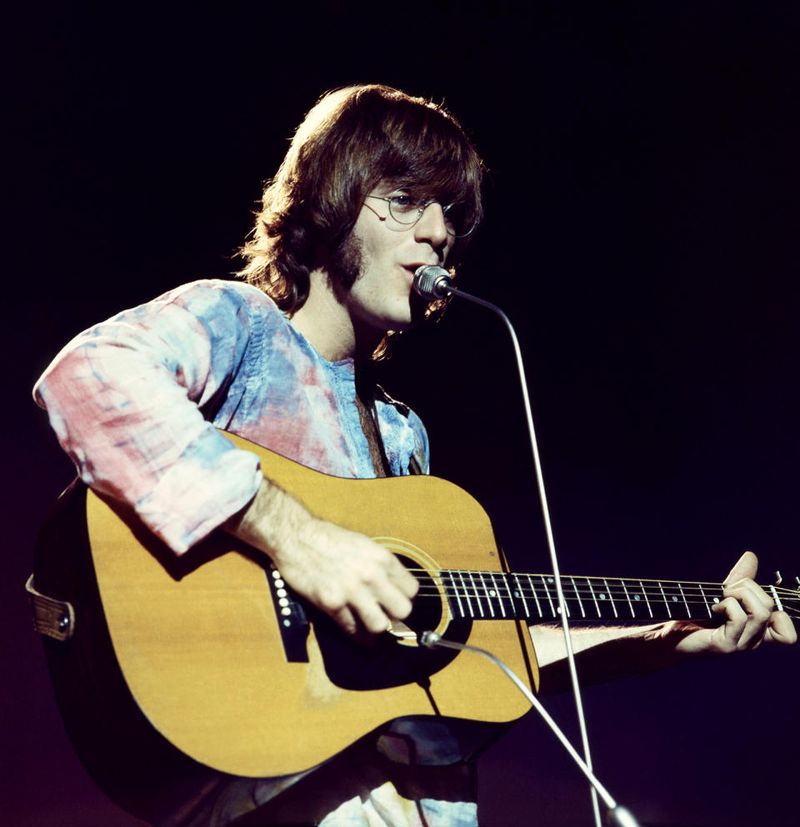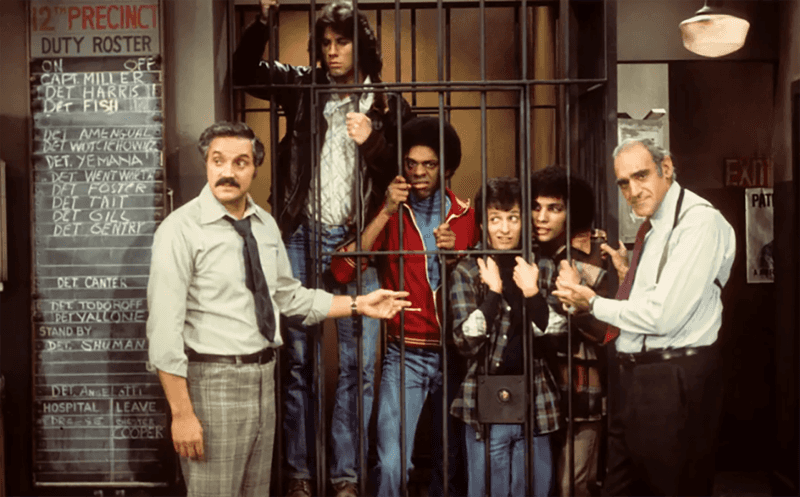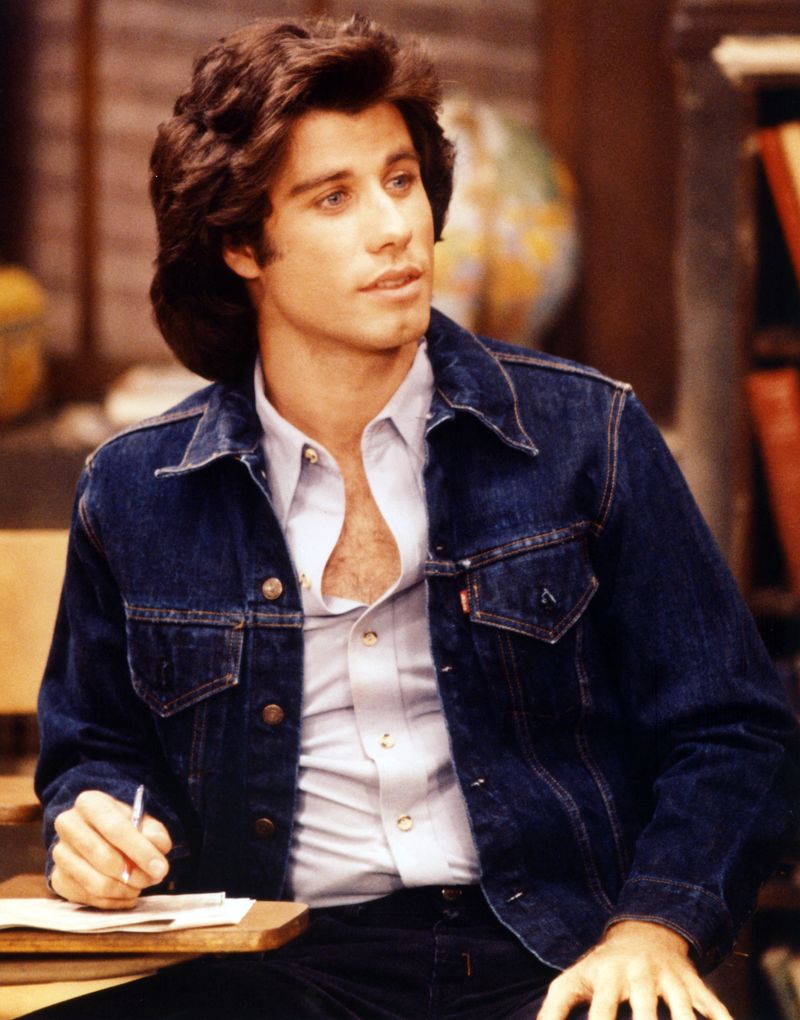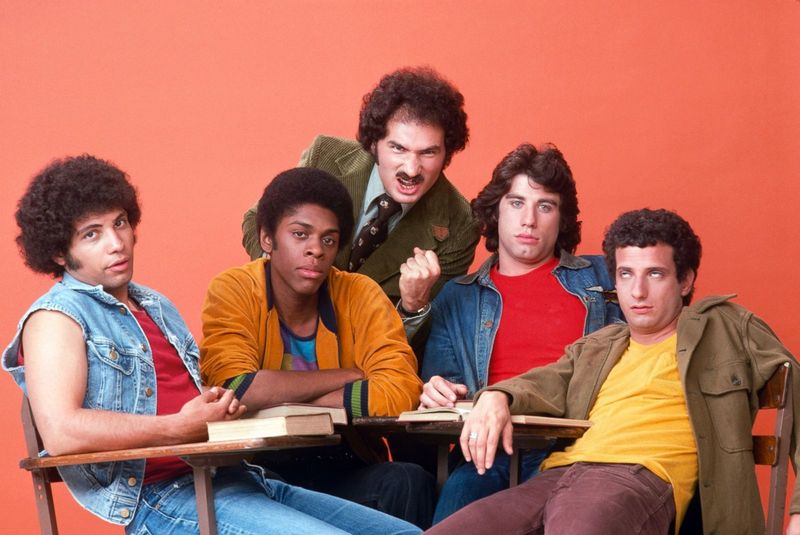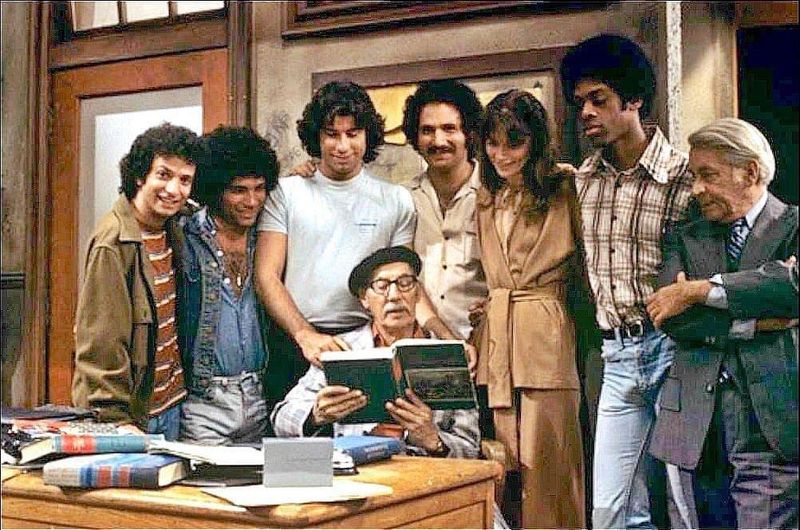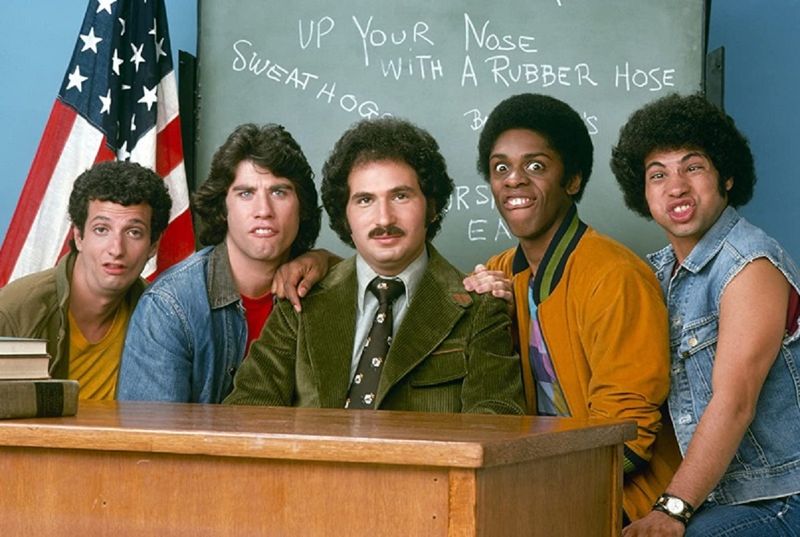“Welcome Back, Kotter” resonated with audiences by mirroring the societal shifts and cultural norms of the 1970s. Its portrayal of a Brooklyn high school filled with quirky characters and genuine storylines struck a chord with viewers, offering both humor and insight during a transformative decade. Here are ten reasons why this show perfectly encapsulated the spirit of the 1970s.
1. The Rise of Relatable, Working-Class Comedy
The 1970s saw a shift in television towards relatable, working-class comedies, and “Welcome Back, Kotter” was at the forefront of this movement. The show depicted a Brooklyn high school where misfit students, known as the Sweathogs, navigated everyday struggles. The humor was both heartwarming and reflective of the era’s challenges. The show’s setting and characters were a microcosm of 1970s America, making it feel genuine and familiar to its audience. The authenticity of the characters and their situations made viewers laugh and think, as they saw their own lives reflected on screen.
2. The Sweathogs Were Instantly Iconic
Each Sweathog character became a symbol of 70s youth culture. Vinnie Barbarino, with his cool demeanor, and Arnold Horshack, with his unique laugh, captured the essence of teenage life. The characters were vibrant and full of life, each bringing their charm and chaos to the screen. They represented various facets of youth, from the rebellious to the comedic. Their interactions were not only entertaining but also reflective of the social dynamics of the time. The Sweathogs’ camaraderie and individuality made them unforgettable figures in television history.
3. Gabe Kotter’s Quick Wit and Warmth
Returning to his alma mater, Gabe Kotter brought quick wit and warmth to the classroom. As a teacher, he balanced humor with genuine care, something much needed in the turbulent 1970s. His interactions with the Sweathogs were both comedic and heartfelt, showcasing the power of empathy and understanding. Kotter’s role in the show was pivotal, as he navigated the challenges of teaching with grace and humor. His character became a symbol of hope and change, reflecting the broader societal shifts of the decade.
4. Catchphrases That Took Over Pop Culture
The catchphrases from “Welcome Back, Kotter” became cultural staples. “Up your nose with a rubber hose” was repeated across schools and homes, embedding itself into the lexicon of the time. These phrases were humorous and catchy, resonating with audiences of all ages. The show’s language captured the playful spirit of the era, making it endearing to viewers. The viral nature of these catchphrases highlighted the show’s impact on popular culture, creating a shared language that brought people together in laughter.
5. A Soundtrack That Hit All the Right Notes
John Sebastian’s theme song “Welcome Back” became an anthem of nostalgia, perfectly setting the tone for the show. The music captured the feel-good vibes of the time, resonating with viewers. The song’s success on the charts mirrored the show’s popularity, as both became intertwined in the cultural fabric of the 1970s. The soundtrack added an emotional depth to the series, connecting audiences to the characters and their journeys. Music was a vital part of the show’s identity, enhancing its nostalgic appeal and timeless charm.
6. It Tackled Real Issues—With Humor
“Welcome Back, Kotter” bravely addressed real issues such as race, poverty, and teenage rebellion. The show used humor as a tool to discuss these topics, making them accessible and relatable. By weaving serious themes into comedic narratives, the series educated and entertained simultaneously. This approach was innovative for its time, as it allowed audiences to engage with challenging subjects in a light-hearted way. The show’s ability to tackle important issues without losing its comedic edge made it both groundbreaking and beloved.
7. John Travolta’s Star Power Was Born
John Travolta’s role as Vinnie Barbarino catapulted him to stardom, showcasing his charisma and talent. His portrayal captured the attention of both audiences and Hollywood, leading to a successful film career. Travolta’s performance was a highlight of the show, blending humor with a magnetic presence. His character became an icon of 1970s pop culture, symbolizing the allure and potential of young talent. “Welcome Back, Kotter” served as a launching pad for Travolta’s career, forever linking him to the charm and spirit of the era.
8. A True Time Capsule of 70s Fashion
The fashion featured on “Welcome Back, Kotter” was a vivid reflection of the 1970s. Bell bottoms, wild prints, and big hair filled the screen, capturing the eclectic style of the decade. The clothing choices were bold and expressive, mirroring the free-spirited nature of the era. The show’s wardrobe became iconic, influencing viewers and leaving a lasting impact on fashion. This visual representation of 70s style added authenticity to the series, making it a true time capsule of the period’s cultural aesthetics.
9. The Power of Second Chances
At its core, “Welcome Back, Kotter” was about the power of second chances. The series emphasized that no one is a lost cause, a message that resonated deeply during a decade of change. The characters’ growth and transformation highlighted the importance of understanding and redemption. This theme was woven into the fabric of the show, reflecting the aspirations and challenges of the 1970s. The narrative of second chances provided hope and inspiration, making the series a beacon of positivity and possibility.
10. It Celebrated Diversity Before It Was Common
“Welcome Back, Kotter” was ahead of its time in celebrating diversity. The multi-ethnic mix of students at the fictional James Buchanan High School reflected the real-world demographics of urban America. This portrayal was groundbreaking, as it showcased the richness of different cultures and perspectives. The show emphasized the value of diversity and inclusion, resonating with audiences who saw their own communities reflected on screen. By embracing a wide array of backgrounds, the series set a precedent for future television shows, highlighting the importance of representation.
